Published May 7, 2019
Your Tiny Starfleet Officers Will Love These Books
We've got 20 children’s books to introduce the wonders of space in the classroom and beyond.
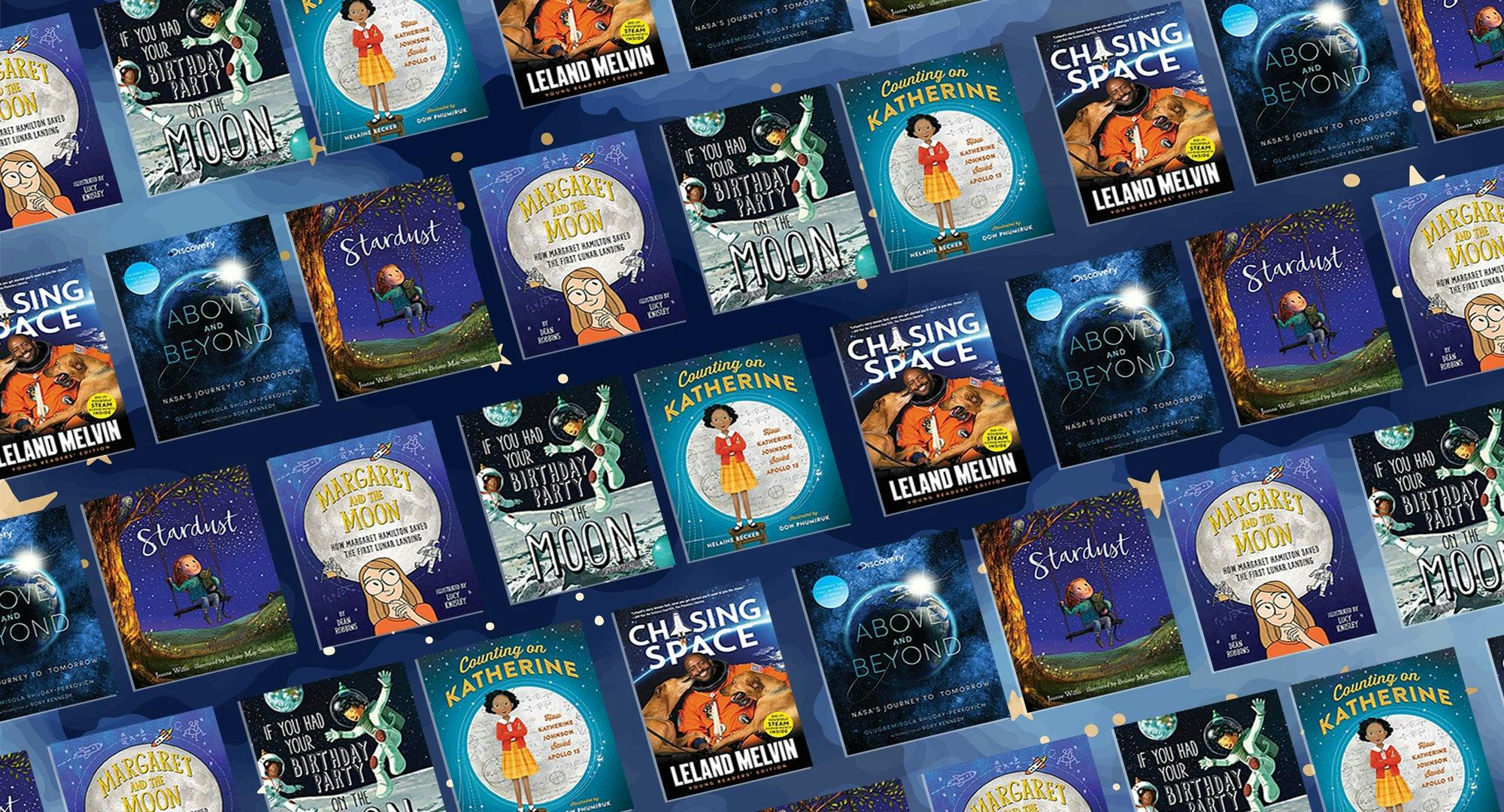
StarTrek.com
For many of us, our love of space begins when we’re children. Maybe it was the first time you looked up and saw a shooting star, or an orange moon — or maybe it was the first time you heard Captain Jean-Luc Picard command, “Engage.” Either way, your love was encouraged and fostered and now you’re here, wanting to encourage another generation’s love for space.
Luckily, they make a few really great books for that.
This wide selection of children’s books about space is grouped by grade level, but the categories are malleable depending on a child’s practical reading level, so look at the grade levels surrounding the one you teach (or the one your child is in) for more ideas. Not only are these books fun educational tools, they’re also are representative of both how we want our Star Trek future to look, and how our children and classrooms already are—inclusive and diverse, full of wonderment and thirsty for knowledge.
Space Books For Pre-K – Kindergarten
ABCs of Space by Chris Ferrie and Julia Kregenow
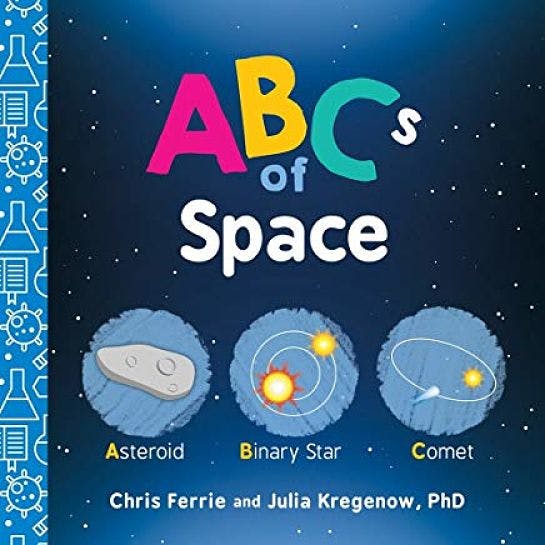
Sourcebooks Explore
Baby University is a series of scientific board books aimed at toddlers and Pre-K children. Written by a quantum physicist and an astrophysicist, this book is a space nerd’s delight. A is for Asteroid / B is for Binary Star / C is for Comet / D is for Dark Matter. Under each term, there’s an illustration, a definition, and a brief paragraph giving a little more depth to the term. This is an excellent introduction to space for very young children.
Stardust by Jeanne Willis
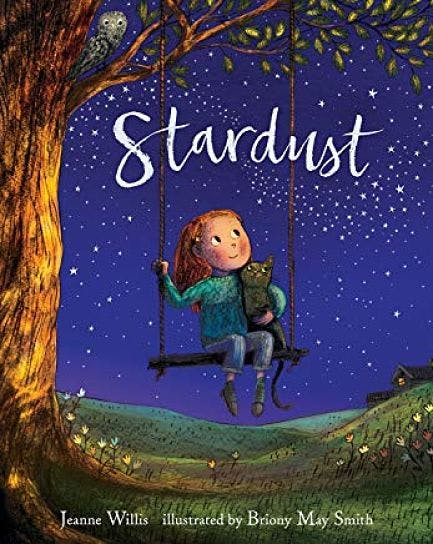
Nosy Crow
A little girl wants to be a star, but her older sister outshines her in every way. When she loses a costume contest to her sister, her grandfather explains the origins of the universe and how everyone is made from stardust. Because it’s embedded in an emotional story that young children can identify with, this picture book is a great way to teach children about the origins of the universe and space. My own daughter was mesmerized by the gorgeous illustrations!
Mae Among the Stars by Roda Ahmed, Illustrated by Stasia Burrington
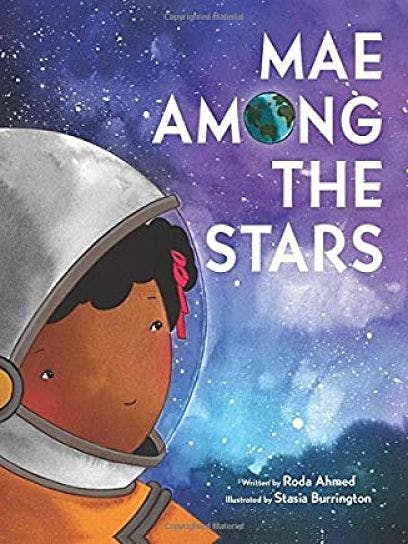
HarperCollins
Dr. Mae Jemison was the first Black woman to travel to space. This biography tells of her childhood passion to get there. It’s perfect for reading aloud, and the illustrations are vibrant and lovely. It’s a wonderful testament to the power of hard work to achieve your goals, and also works perfectly to accompany questions like, “What do you want to be when you grow up?”
Mission to Space by John Herrington
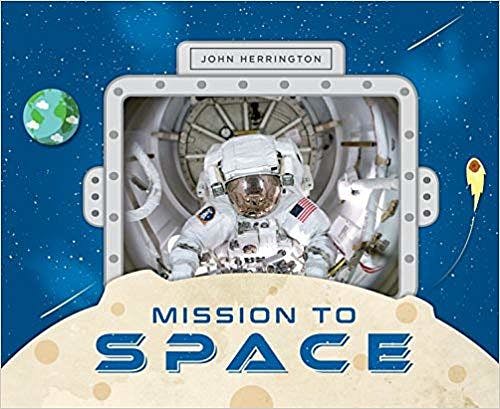
White Dog Press
Chickasaw Nation astronaut John Herrington traveled to the international space station in 2002, becoming the first Indigenous American in space. This book chronicles his voyage and includes photographs of Herrington during his training and in space. It also includes a Chickasaw/English dictionary in the back. Too often, the only mention of indigenous people in the classroom occurs in context of the distant past, so it’s great to have this picture book for children to see that they are part of our current history as well.
Space Books For First Grade
I am Neil Armstrong by Brad Meltzer, Illustrated by Christopher Eliopoulos
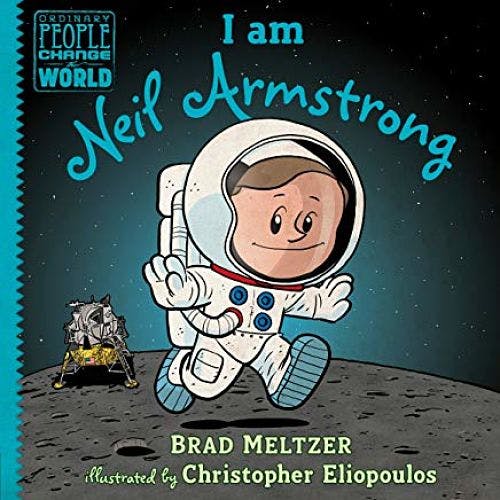
Dial Books
This bite-sized biography of the most famous astronaut is a perfect way to entice beginning readers into learning more about space. It follows a young Neil Armstrong as he learns to be brave and to work hard to follow his dreams. It’s part of the Ordinary People Change the World: Picture Book Biography series. There are about 20 of them, and each one is approachable and fun.
National Geographic Readers: Night Sky by Stephanie Warren Drimmer
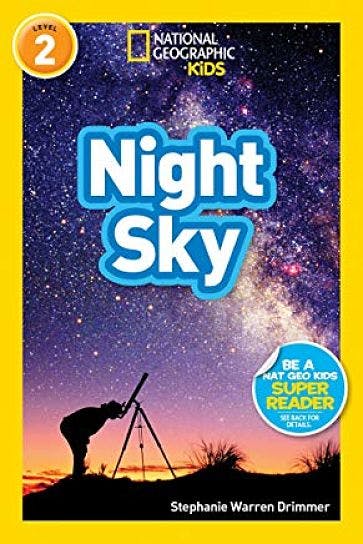
National Geographic
Beginning readers are a must for first grade classrooms. This reader is a level 2 - for students who can read on their own with a little adult help. National Geographic has lots of informative readers about space at all reading levels, from the planets to meteors to Mars. Their vivid illustrations make them some of my favorite nonfiction readers, and they ask questions engaging throughout.
Look Up with Me: Neil deGrasse Tyson: A Life Among the Stars by Jennifer Berne, Illustrated by Lorraine Name

Katherine Tegen Books
This picture book follows famous astrophysicist Neil deGrasse Tyson during his childhood and stresses the importance of maintaining curiosity. Not only will the story inspire students, but the gorgeous paper-cut illustrations will as well, and you could have students emulate them for an art project. Just like Neil deGrasse Tyson himself, the book encourages children to go outside and look up. It also contains a glossary of terms in the back.
Space Books For Second Grade
If You Had Your Birthday Party on the Moon by Joyce Lapin, Illustrated by Simona Ceccarelli

Sterling Children's Books
Both a silly and informative book, If You Had Your Birthday Party on the Moon makes an excellent read for second graders. It’s about your birthday party, and all the plans you’re making to ensure it’s the best birthday party you’ve ever had - on the moon. And yes, Lapin uses second person, hence the “you.” Throughout, boxes of facts about the moon and space travel pop up for the reader to explore on their own. The illustrations are vivid and playful.
Counting on Katherine by Helaine Becker, Illustrated by Tiemdow Phumiruk

Henry Holt and Co.
This picture book biography is about Katherine Johnson, the genius mathematician who helped save the Apollo 13 mission. You probably remember her from the movie or book Hidden Figures by Margot Lee Shetterly (I include the young readers’ version under 5th grade). Using engaging prose with repeated lines, the biography begins with Johnson’s childhood love of counting. The illustrations are lovely, and the book actually addresses math in specific terms rather than simply, “She liked math.”
Margaret and the Moon by Dean Robbins, Illustrated by Lucy Knisley
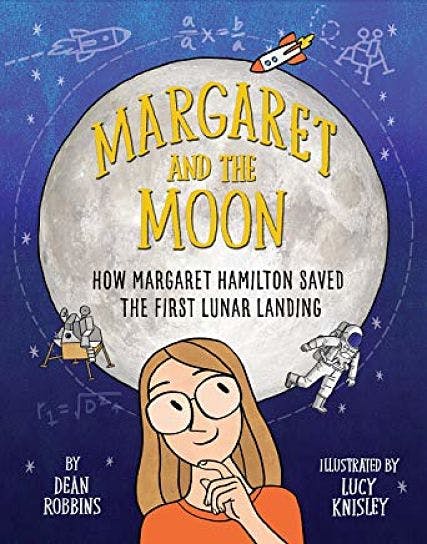
Knopf Books for Young Readers
Look, another Margaret! Margaret Hamilton is a mathematician who wrote a code that helped send Neil Armstrong to the moon. It’s illustrated by one of my favorite graphic novelists - Lucy Knisley - and the art is my favorite part about this, although the story really is just as good.
Space Books For Third Grade
Twinkle Twinkle Little Star, I Know Exactly What You Are by Julia Kregenow, Illustrated by Carmen Saldaña
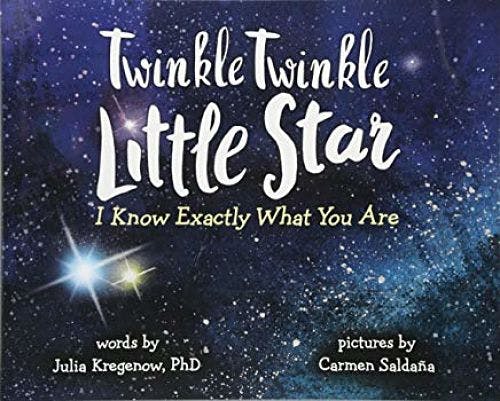
Sourcebooks Explore
To the tune of “Twinkle Twinkle Little Star,” astrophysicist Julia Kregenow explains the science behind the stars, introducing terms like neutrons, supernovas, atoms, and more. While the song inspiration might imply that it’s for younger children, the reading level is for an older student. There’s also a guide in the back that provides more information about the terms introduced in the song. As an extra activity, you could have students come up with new lyrics based on the tune of “Twinkle Twinkle Little Star” using other scientific terms.
To the Moon and Back: My Apollo 11 Adventure by Buzz Aldrin and Marianne Dyson, Illustrated by Bruce Foster
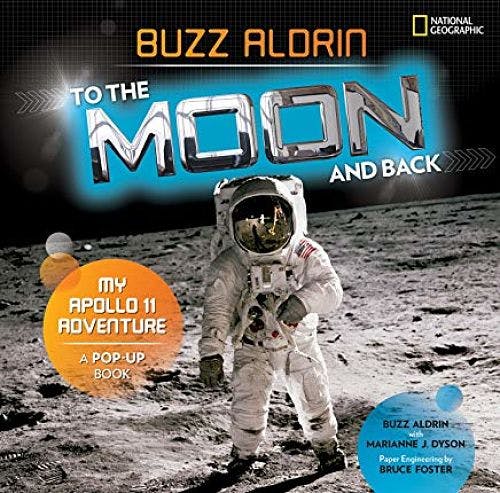
National Geographic
This amazing pop-up book chronicles Buzz Aldrin’s Apollo 11 mission. It’s full of facts both about the mission and about space, with photographs and pop-up images. Kids love pouring over this one, and hopefully 3rd graders are old enough for those pop-ups to remain intact - they’re remarkable and so much fun.
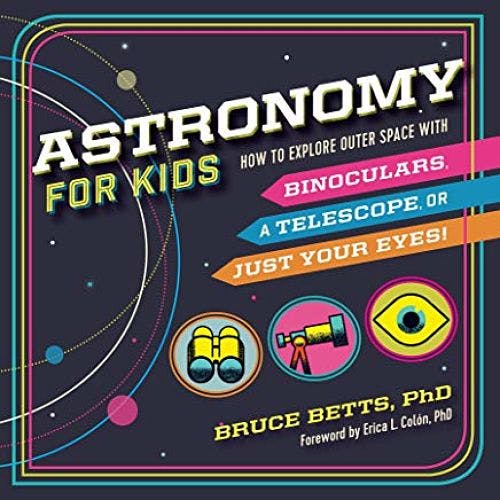
Rockridge Press
This practical guide to stargazing by astronomer Dr. Bruce Betts is a must for kids. It includes where and how to find 30 sights with the naked eye, and 25 sights with binoculars or a basic telescope. It also features facts about each of the celestial objects and clearly defined terms. Betts’ book is an excellent companion to a unit on space, and you can guide your students to finding some of the celestial objects from the book.
Space Books For Fourth Grade
Star Stories: Constellation Tales from around the World by Andy Wilx and Anita Ganeri
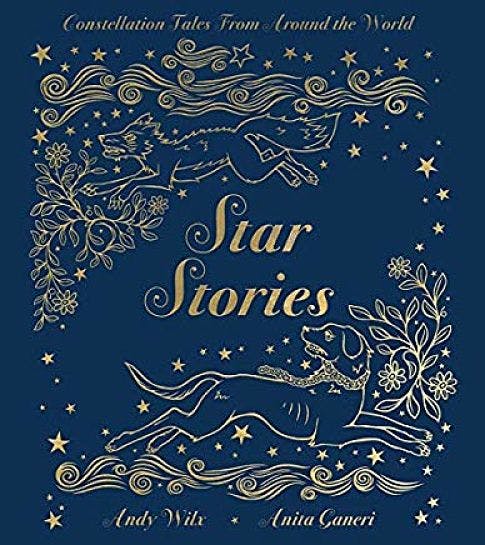
Rockridge Press
This collection of myths about the constellations can be a companion to a unit on the stars. Creating interdisciplinary units is so worth it when you see things click for students on multiple levels. And a collection of folktales can show non-science-minded students the joys of space. Taking the stars beyond the science and into human storytelling can form more connections and enjoyment of the stars for everyone. And bonus: this book is gorgeously illustrated. You’ll want to frame the pages! (Out July 2)
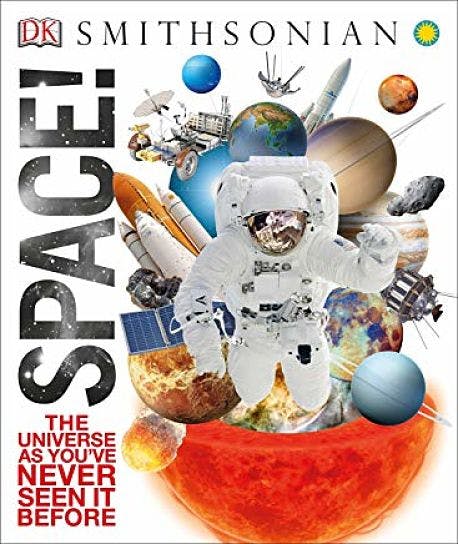
DK
This comprehensive, illustrated encyclopedia will be a favorite in the classroom. Full of facts and engaging illustrations and infographics, there’s always something new to learn, from planets to black holes to the big bang. DK has many children’s encyclopedias, but this is my favorite.
Who Was Neil Armstrong? by Roberta Edwards
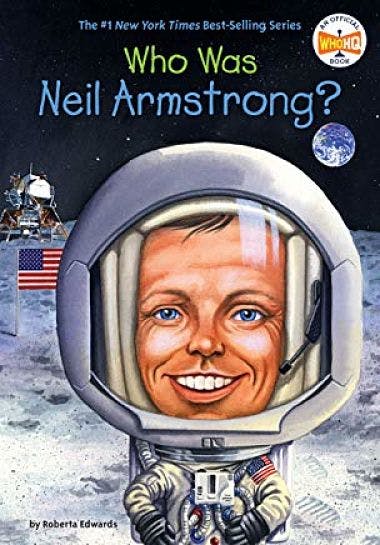
Penguin Workshop
I love the Who Was biography series and judging from the way they fly off the shelves at the bookstore I work at, kids love them too. They’re approachable chapter books, long but not overwhelming, and tell an excellent story. Who Was Neil Armstrong? is a great way to teach students about Neil Armstrong, the moon landing, and about how biographies work.
Space Books For Fifth Grade
Hidden Figures Young Readers' Edition by Margot Lee Shetterly
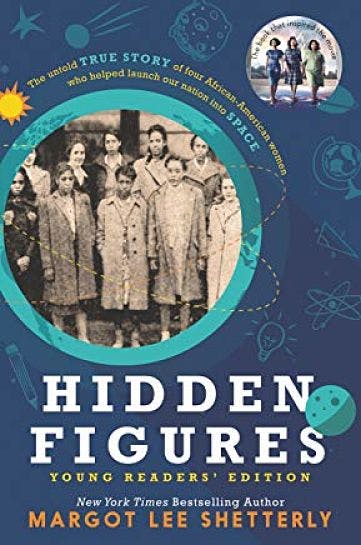
HarperCollins
I suspect many teachers already know about this one. Every summer, a slew of upcoming fifth and sixth graders come in my bookstore asking if we have this book because it’s on their summer reading list - and rightly so! The abridgment of Shetterly’s adult biography of the same name is a great summer read. It explores the lives of the four Black women mathematicians who were essential in Apollo 13’s mission: Katherine Johnson, Dorothy Vaughn, Mary Jackson, and Christine Darden. While there’s also an excellent movie adaptation of the book, it’s still worth reading for the many intersections of history, social studies, math, and science that it covers. These women’s lives intersected with race relations, gender, and science. It’s fascinating.
Galaxy Girls: 50 Amazing Stories of Women in Space by Libby Jackson
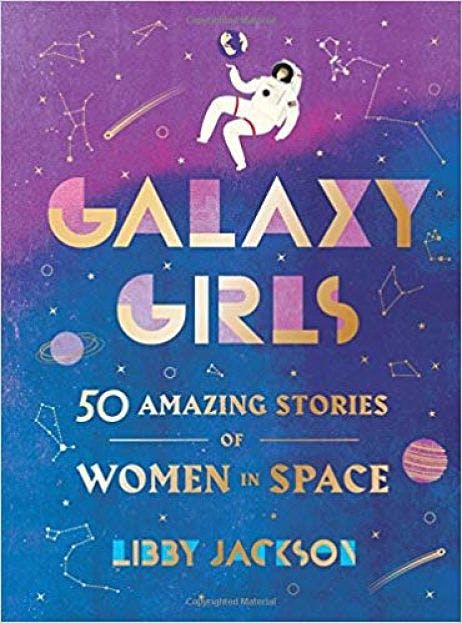
HarperCollins
This book collects mini, one-page biographies of some of the women involved in space exploration and its possibility, from Ada Lovelace to Peggy Whitson. An engaging and vibrant illustration accompanies each page. You could use this as an introduction to writing biographies as a genre, and maybe even have your students write their own biographies, illustrate them, and collect them into a "book" like this one.
Chasing Space Young Reader’s Edition by Leland Melvin
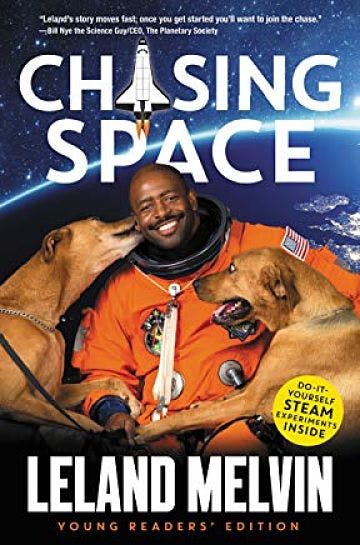
HarperCollins
Another adaptation of an adult biography, Leland Melvin’s story is sure to charm and inspire young readers; he’s just so cool and friendly! Once a football player, Melvin joined NASA after suffering an injury on the field. He’d go on to fall prey to another injury during training that damaged his hearing, yet still went on to help repair the International Space Station. The book includes experiments for kids to try, perfect built-in activities for the classroom.
Above and Beyond: NASA's Journey to Tomorrow by Olugbemisola Rhuday-Perkovich

Feiwel & Friends
Though this book is a companion to a documentary of the same name, it can be used in conjunction with the documentary or on its own. It provides a history of NASA, from the Wright brothers to animals in space to plans for future launches. It provides fact boxes and highlights key people from NASA as well as lesser known contributors. It also includes an extensive bibliography in the back, which could be nice if you’re planning a unit about research.
Margaret Kingsbury (she/her) writes about children's books at Baby Librarians, a website she co-founded, and is a contributing writer at Book Riot, where she raves about SFF books she loves. You can find her on Twitter @areaderlymom and on Instagram @babylibrarians

